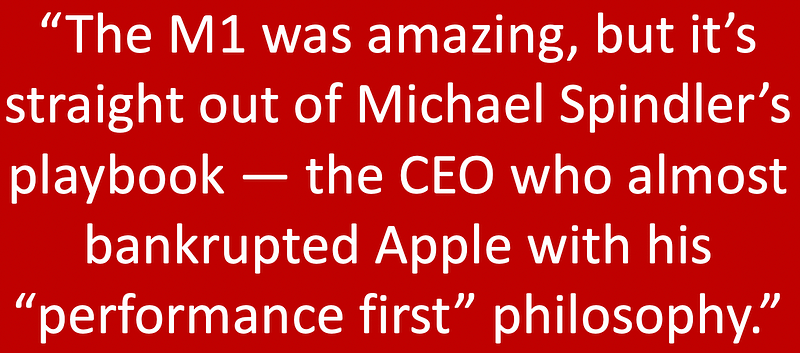Apple, Innovation and Steve’s Museum

Apple, Innovation and Steve’s Museum
I’m a heavy Apple user and an extensive computer user. I just want computers to help me with my work, and not get in the way. I should turn them on, and created code, and it should all work without worrying about stuck keys, system crashes, or corrupt installs. My ecosystem of devides normally involves the creation of code, and the Apple environment allows me the best environment to do this.
Apart from the disastrous Macbook Pro with the butterfly keyboard, all of my devices have been reliable, and great to use. All my devices integrate well together — with my Macbook Pro at the core of this. For security, I don’t hop from one vendor to another, Apple makes it all work in the background. When I need to move to a new device, it’s a short hop, but it’s all back up and running as it was before.

Bad innovation and poor UX
A few years ago I was having lots of problems with the butterfly keyboard, continual fan wirring, and with the lack of ports. My Macbook even developed a serious fault — with large purple blocks appearing on the screen. It was a terrible computer, and completely different to any Macbook I had had in the past. Someone, somewhere, decided that a nice-looking keyboard matter much more than how it felt to typing on it. Perhaps a bit like the inventor of the square steering wheel in cars?
To me, a keyboard is the core experience in using a computer, and a poor keyboard leads to a poor user experience. And, for the silly soft keys (or whatever their name was), I never once used them, and was continually having problems finding something as simple as pressing Esc or using the function keys. I didn’t really care that the computer looked good … the new features just got in the way.
Apple listened
Luckily, Apple listened, and my new computer has more ports, a MagSafe charger port, and a lovely keyboard. It has proper keys for its functions keys, and an Esc button. Apple was back on track, but all it was doing, was just going back to what it did well in the past. The Macbook Pro 2015 unit was almost perfect for most users, but the designers just kept hacking out the good backs and created a monster. With the Macbook Pro, technical users found a core build around a Linux-like shell.
Steve’s Museum
Overall, though, Apple is a truly interesting company, and one that (perhaps) that still thinks it is a startup, and is still battling against the dinosaurs of the industry. And, so, this article really resonates with me:
Why Apple’s slow and painful downfall is Steve Jobs’s own faultalan-12169.medium.com
It’s a classic article that every innovator and company leader should read. My favouriate comment is this one:

I love it, as it echoes what I’ve seen, and when you look back on Apple’s recent roadmap, they just keep moving their products on — but lack any great new innovations. As the article says, the M1 processor has been a great success, but its focus is on performance improvements, rather than real innovation:

I also respect companies such as IBM and Microsoft, and who have continued to innovate but have a strong focus on technical excellence. But, whenever a tech company fails to focus on innovation, and more on sales, it can be a slow decay process. The article quotes Tripp Mickle, who believes that great companies eventually slow down their innovation, and put salespeople in charge, and focus on how much the company sells, rather than on its products:

The article continually re-enforces the idea that Steve Job built a company where he wasn’t the brain, but its nervous system. Steve integrated disparate units together but had a core focus on the detail of the products. The company is now built on all the products that Steve led forward and has released very few new product ranges after his death. Its sales continue to improve year-to-year, making some of the best profit margins.

Apple is a very successful company. Ask most Apple users if they like their products, and most would say they are excellent. Look at online reviews, and you will find very few people critisising their products. People get what they want. But, the products are just becoming a sequence of “performance improvements” … faster, smaller, less energy, and so on. That isn’t true innovation. They do need true innovators, and they look not 1–3 years into the future, but 5–10 years.
Conclusions
We have never had such a company as Apple. As a brand, it is one of the most trusted around. But it is its products that continue the strength of its brands. A failure on any one of these could cause cracks in the company. Perhaps Steve was at least a decade or two ahead of everyone, and other companies are still catching up?
The development of the M1 processor is truly innovative, but users wouldn’t actually know of its greatness, and where improved keyboards and more ports are the real selling points. Apple did this in the past, and in moving away from IBM chips to Intel chips. It radically changed Apple products, and allowed them to focus on software, rather than hardware. For users, there is little care as to what happens under the hood.
So, Apple need to watch that it does not end up focusing on performance and sales and less on products, and make sure that they …
